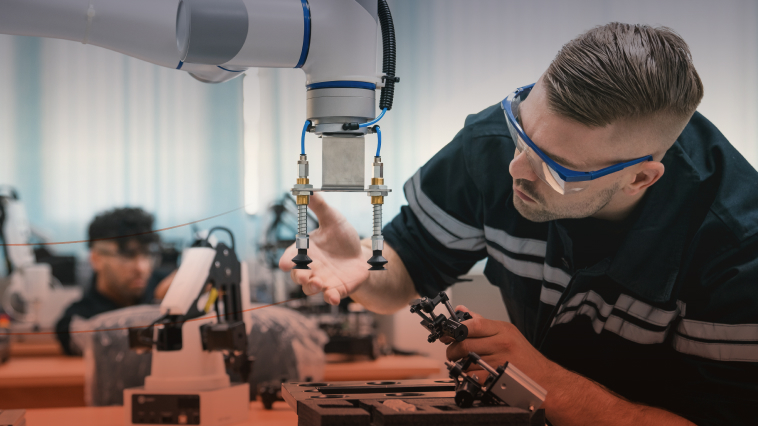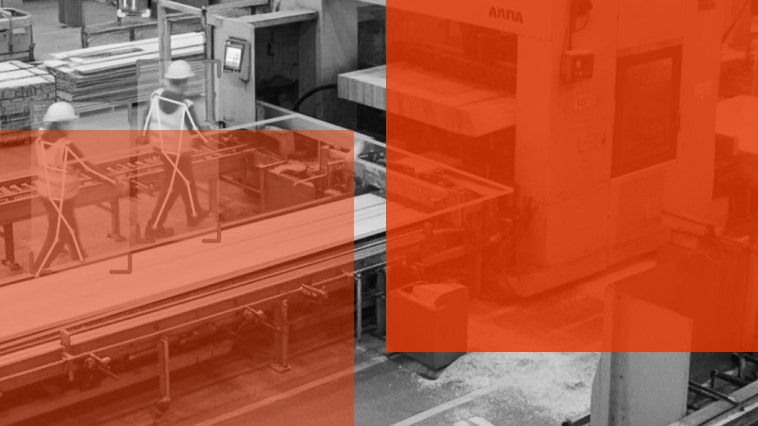The National Safety Council has uncovered a concerning fact: In 2021, transportation accidents accounted for a shocking 38% of all work-related fatalities. This statistic alone, emphasizes the urgent need to prioritize road safety and develop effective strategies to reduce these risks.
Consider this: Workplaces are bustling hubs of activity, where the smooth flow of traffic is essential for seamless operations. And ensuring employee safety isn't just a moral imperative; it's crucial for preventing accidents, injuries as well as production and logistics delays and potential legal liabilities. Effective workplace traffic management involves implementing proper traffic control measures, providing comprehensive training to employees, enforcing traffic rules and regulations, regularly inspecting and maintaining traffic control devices, and fostering a culture of safety awareness among all employees.
Now, let's fast forward to the future. Picture a workplace where technology, like AI, collaborates with safety teams to create an environment that's not just safe but also efficient. Yet, neglecting workplace traffic management can lead to dire consequences, including accidents, injuries, and significant financial losses for the organization.
So, here's the burning question: In an era marked by advancements in workplace safety, why does work-related road safety remain a persistent challenge, claiming thousands of lives annually?
The shortcomings of traditional EHS methods
Conventional strategies for managing road safety typically rely on methods like signage, physical barriers, and manual surveillance. While these methods have undoubtedly been instrumental in improving overall safety, they often fall short in delivering lasting solutions and immediate insights.
Moreover, despite awareness campaigns and training initiatives, relying solely on human observation can lead to errors or oversights, failing to offer the comprehensive data necessary for informed decision-making and continuous improvement.
Fortunately, a solution exists! Organizations can tackle these obstacles and bolster workplace road safety by embracing Intenseye’s AI-powered safety management software, which surpasses traditional methods by delivering real-time insights and actionable data.
Intenseye’s Vehicle Controls module
Leveraging the capabilities of artificial intelligence, computer vision, and machine learning, the Vehicle Controls module empowers safety teams to identify various safety hazards associated with workplace traffic management. Through a real-time scanning and notification system, road safety is significantly bolstered.
Here are some key features and benefits:
• Enhanced road safety for all: By utilizing Intenseye’s Vehicle Controls module to measure distances between vehicles and pedestrians in the workplace, safety teams receive real-time notifications when proximity breaches predefined safety thresholds. With this robust tool at their disposal, EHS leaders can confidently prioritize the safety of both vehicle operators and pedestrians, ensuring collisions are avoided.
• Fostering a safety culture: With Intenseye’s AI-powered safety management software, EHS leaders can swiftly detect vehicles exceeding specified speed limits, allowing them to promptly address speed violations. By promoting compliance with speed limits, our workplace safety software has become an indispensable tool for EHS teams in their daily operations, empowering them to confidently progress toward success.
• Improved traffic flow: Safety supervisors can rely on Intenseye to promptly identify and rectify vehicles deviating from assigned routes or moving in the wrong direction, prioritizing on-site safety for all. This results in enhanced operational efficiency, reduced congestion, and a safer work environment.
• Compliance enforcement: With Intenseye, EHS supervisors can supervise whether vehicle operators consistently adhere to safety protocols, particularly regarding the proper use of personal protective equipment (PPE) while driving. Safety leaders emphasize how this feature reinforces their ability to cultivate a safety-conscious culture.
• Automated inspection and task management: Rather than waiting for incidents to occur, safety leaders can swiftly take preventive and corrective actions, such as creating tasks or initiating inspections, directly in response to identified risks on the Intenseye platform.
• Data-driven Insights: Safety supervisors can gain a strategic advantage by receiving actionable insights on road safety from Intenseye’s EHS platform. By analyzing data on traffic patterns, near-miss incidents, and potential hazards, safety leaders can make informed decisions, implement targeted safety measures, and continuously enhance road safety protocols.
• Cost reduction and operational efficiency: By preventing incidents and reducing injuries resulting from road safety violations, organizations can minimize costs associated with medical expenses, property damage, and downtime.
• Employee engagement and trust: Prioritizing road safety through technology demonstrates a commitment to employee well-being, fostering engagement, trust, and loyalty among staff. This contributes to a positive work environment and psychological safety in the workplace.
• Setting industry standards: Safety supervisors embracing AI technologies become safety pioneers, leading the way in transforming workplace safety. By utilizing Intenseye’s AI-powered safety software, they can initiate facility safety initiatives that have the potential to evolve into company-wide endeavors, setting new standards in the industry.
If you want to learn more about how can you utilize computer vision AI for road safety, dive into the success story of Coats!



